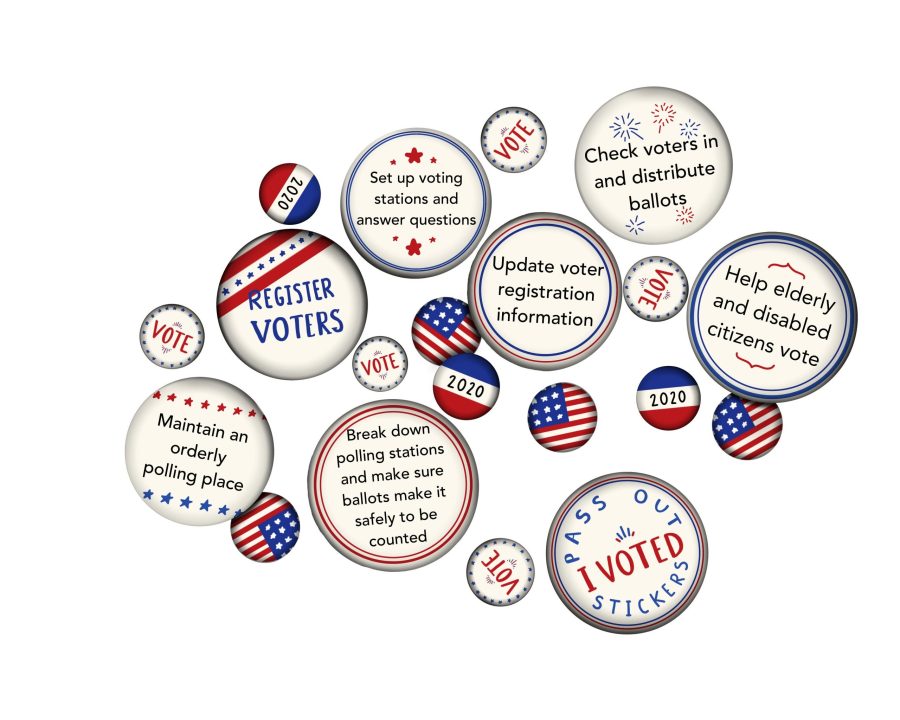Clad from head-to-toe in PPE, senior Laura Malagrino envisions herself leading a voter through the Rinconada Library to a polling booth on Nov. 3. This may seem routine to many, but something is different this year. The familiar faces of senior poll workers who have always greeted voters and assisted in the voting process are nowhere to be found. In their place are high school students, eager to help place votes.
“I’m excited to see how it works and make sure that everyone gets the chance to vote,” Malagrino said.
This year, COVID-19 is threatening senior citizens who would usually work at the polls. In 2016, 53% of poll workers were over the age of 60. The ability to dedicate a few weekdays is a privilege enjoyed mostly by retirees, meaning the majority of the workforce would likely have to take a vacation day to help facilitate the polling process.
Pitzer College junior and 2018 Paly graduate Michaela Fogarty is working as a Student Recruiter for Campus Compact’s Safe Elections Project, an organization partnering with Power the Polls to recruit poll workers. Like Malagrino, Fogarty also plans to work at the polls this fall in an effort to combat the voter suppression that has been seen in recent elections.
“It’s really important that we have polling booths that run efficiently, and people that are making sure those polling booths are running efficiently,” Fogarty said. “It shouldn’t be a matter of who can stand in a long line or take time off work.”
In an effort to combat any potential incidents of voter suppression during this election, many upperclassmen are eligible to work at the polls. Student poll workers must receive parental consent if they are under 18, be 16 on or before Election Day, a U.S. citizen or documented resident and have a GPA of 2.5 or higher.
According to Stanford graduate student Peter Dykstra, students that are not yet eligible to vote can take advantage of this opportunity as a way to exercise their civic duty in the election.
“I think that not being able to vote can cause a lot of frustration,” Dykstra said. “You may want to see change, but you may not know how to make that change happen. I think one of the best ways to make that happen is by working at the polls.”
During the March primaries, Dykstra worked at a polling place as a greeter, a job that high school students will likely do.
“I really liked it because I got to see the faces of Palo Alto in a way I never had before,” Dykstra said.
Student poll workers can earn $115 or community service hours for a full day of participation. Though working to keep elections fair is an appeal in itself for some, the added benefit of receiving compensation for working motivates more students to register, like junior Anna Nemerov.
“(Getting paid) was definitely an incentive,” Nemerov said. “I still would’ve done it if I was just volunteering; it’s a little bonus.”
Poll workers must complete 3 ½ hours of in-person training before working to understand their responsibilities, which include registering voters, making sure ballots leave the polling place safely and passing out “I Voted!” stickers.
In order to prevent the spread of COVID-19, Santa Clara County is providing masks, aprons, gloves, face shields and disinfectant for all poll workers, as well as requiring all voters to wear a mask. Social distancing will be enforced.
“I think that it’s important that kids our age come out and see this opportunity as something they can do to keep other people safe,” Nemerov said.
Students interested in contributing as poll workers can visit www.powerthepolls.org. The deadline to sign up is Sept. 30.

